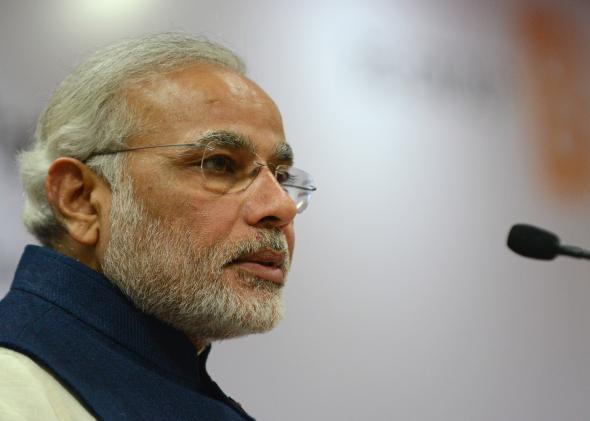At this time last year, Narendra Modi was legally barred from entering the United States. Now, he’s preparing to speak to an estimated 18,000 people at Madison Square Garden on Sunday, likely the largest crowd ever drawn by a visiting head of state. Early next week, he’ll arrive in Washington for a meeting with President Obama.
Modi had been denied a business visa due to accusations that in 2002, when he was chief minister of the state of Gujarat, he allowed or even encouraged riots in which more than 1,000 people, most of them Muslims, were killed. (If you want to learn more about these events, I recommend Vinod Jose’s lengthy 2012 profile.) The U.S. ambassador wouldn’t even meet with him until February, when it became overwhelmingly clear he was about to be elected prime minister of India.
While Modi, once known as a Hindu nationalist firebrand, toned down his rhetoric on the campaign trail, not all members of his right-wing Bharatiya Janata Party were so restrained. At the time of his election, there was widespread concern that his business-friendly modernizing message masked ethnic nationalist, internationally hawkish, or autocratic tendencies.
But in the four months since he’s been elected, he’s done little to confirm the direst predictions of his critics. In his speeches, he’s affirmed the status of India’s religious minorities, most recently telling CNN’s Fareed Zakaria, in response to reports of al-Qaida setting up a new South Asian branch, “Indian Muslims will live for India. They will die for India. They will not want anything bad for India.”
India-U.S. relations were in a pretty dismal state by the closing days of Manmohan Singh’s tenure, but have somewhat improved since then. Closer to home for Modi, relations between India and its neighbors China and Pakistan have been rocky in recent months, though it’s hard to blame that on any provocations from the prime minister. He invited Prime Minister Nawaz Sharif to his inauguration, has held talks with the Pakistani leader, and went on what was seen as a fairly successful trip to Beijing this summer. Modi took the unusual step of publicly pressuring Chinese President Xi Jinping over the countries’ ongoing border dispute during a meeting in New Delhi last week, but the exchange could certainly have gotten a lot more heated.
On domestic issues, Modi has relieved some and disappointed others who expected he would take a free-market hatchet to India’s public sector, instead moving slowly on economic policy and focusing on reforming India’s bloated and notoriously slow-moving bureaucracy.
In a Wall Street Journal op-ed on Thursday, Modi promises to “create world-class infrastructure that India badly needs to accelerate growth and meet people’s basic needs” in a “sustainable and environmentally sensitive” manner. Modi’s obviously a long way from delivering on some very big promises—access to electricity, sanitation, and financial services for every one of India’ 1.2 billion people, to name just a few of those vows—but from the point of view of foreign governments, including the U.S., that were extremely skeptical of him a few months ago, Modi’s been on his best behavior so far.
But as Modi returns to the city where he was once a regular visitor as a party apparatchik spreading the BJP gospel during the 1990s, he hasn’t entirely turned the page on his past. A day before his arrival, a federal court in New York issued a summons to Modi to respond to a lawsuit over his alleged role in the Gujarat riots. The suit was filed by a human rights group under the Alien Tort Claims Act, a law that gives U.S. courts jurisdiction over suits regarding violations of international law overseas. The suit won’t have much of an effect on Modi—he has 21 days to respond to the claim, so he’ll be long out of the country by the time the deadline runs out—but along with planned demonstrations at both Madison Square Garden and the White House, it’s a reminder that not everyone is ready to move on.
Though a U.S. administration desperate for reliable allies in Asia would probably prefer to let bygones be bygones, nearly every newspaper article about a meeting between Modi and a senior U.S. official will note the controversy over the riots and the travel ban. We may someday get to the point where what happened in Gujarat in 2002 no longer colors the international perception of Modi, but we’re not there yet.
